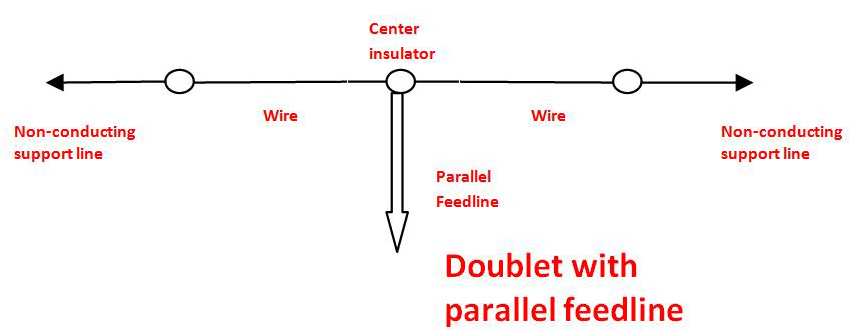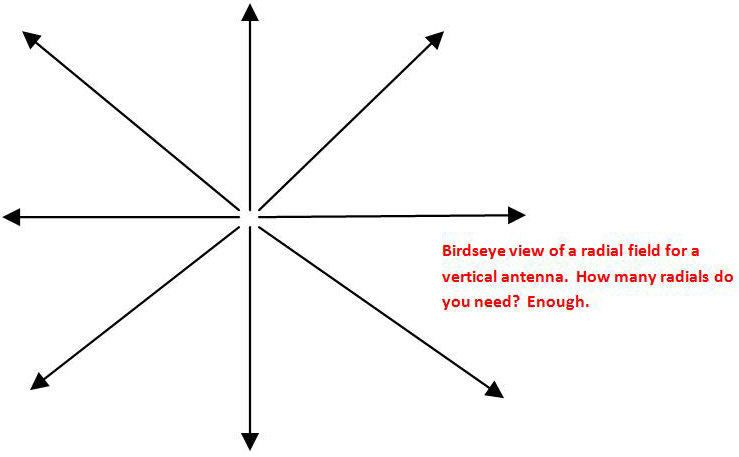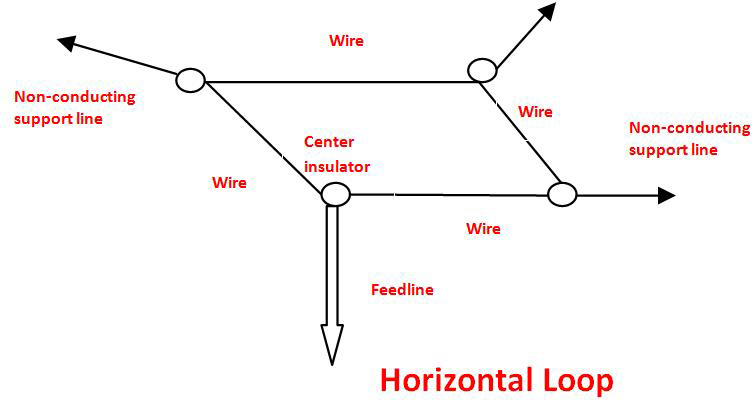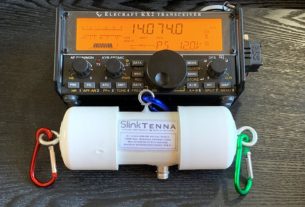By Don Keith N4KC
Copyright 2018 by Don Keith
Some of us give up too easily. Or we are too timid to give something new a try. I have seen several examples of this lately. One was a new amateur who got all excited after he upgraded, acquired a perfectly adequate HF station, but then so far has not gotten around to erecting any kind of decent antenna to use with it. I don’t know if is because he is intimidated due to lack of knowledge about antennas or if he simply is not sure what type of antenna to put up. Maybe he hesitated, thinking he should wait until he had the perfect choice, or something that would elicit “ooohs” and “aaahs” from stations he worked. Think back a hundred years ago when you first got your ticket. All this stuff was a lot to take in at the beginning.
I also know of a long-time ham who came back from a period of inactivity, dragged the old gear out of the closet, and then, for whatever reason, never quite got around to the most important part of the station—the antenna! He threw some wire out the window but could hardly hear anything, and his radio just hissed at him when he tried to tune up that mess.
I confess I am a procrastinator. I tend to spend a long time getting ready to start to begin to commence to think about launching a project until I inevitably forget what it was I wanted to do. And, by the way, what did I buy those parts and rope and wire and fiberglass and aluminum for in the first place?
But this is different. People who may be otherwise enthusiastic about starting or resuming the hobby are allowing fear or hesitancy to keep them on the sidelines. I’m afraid that some of us who attempt to Elmer them sometimes contribute to the problem by pushing antenna ideas that are beyond their means, knowledge or geography. Or even sometimes beyond their interest level or desire for learning. Not everyone wants to be an RF engineer. They just want to work some DX or conjure up a ragchew. There is nothing wrong with that!
In that spirit, I’d like to list below what I would recommend as the five best get-on-the-air-quickly-and-easily antenna ideas. Maybe you have other suggestions, but understand that I am applying the following logic in picking these particular ones:
- They are easy to build for most anyone who is willing to try and do not require any special tools or test equipment.
- They may be crafted from easily available materials and cost very little, so there is not much downside if you mess them up.
- They are not necessarily the be-all, end-all of RF radiators but they do work well enough to give a good experience to the user.
- They are not necessarily the best for all situations, including for use in antenna-restricted neighborhoods or in condos and apartments. That’s another article.
- And if someone attempts to construct one of these bad boys, he or she will possibly learn a little antenna theory by osmosis and, just maybe, will become curious enough about the subject to learn more and try more challenging projects.
Now, in no particular order of preference, here are N4KC’s Top Five Get-on-the-Air-Quickly Antennas:
#1 – The half-wave wire dipole
It is about as basic as it gets and it can work quite well on any HF band. It consists of two pieces of conductive wire stretched end-to-end, and joined together in the middle with a short insulator. We call that the feed point. Insulators and lengths of rope are attached to each of the opposite ends to support the antenna. Some call this a “flat top” antenna or a “doublet.”

It can be hung between two supports—often trees—parallel to the ground. It can also be supported in the middle with the ends sloping downward in an inverted “vee” configuration. For some reason, this is often called an “inverted vee” antenna. If you remember geometry, it might be obvious to you that the inverted vee takes less space than the flat top.
This antenna can be fed with coax, such as the popular and relatively inexpensive RG-8X, which is easy to run from the middle of the dipole to your shack. The center conductor of the coax is soldered or clamped to one leg of the dipole and the shield is attached to the other. There are several commercially available center insulators that allow you to simply screw your coax onto the insulator.
Copper wire is usually used for a number of reasons. The gauge of the wire is not that important so long as it is big enough to adequately support the antenna but not so big that it becomes too heavy and droops. The support ropes should be weather and UV resistant unless you enjoy reattaching them often and tossing them back over the limb.
As with most antennas, the higher in the air you can get a dipole, the better, if you want to work distant stations. You will make contacts, though, if it is just above head high, and in some cases it actually works better over closer range than if it was in the clouds.
The overall length is determined by the formula 468/frequency in megahertz. Results are in feet. That means a dipole cut for 3.8 megahertz will be about 123 feet long, or each leg will be about 61 feet 6 inches. You would need supports (trees) about 130 feet apart with no obstacles between, although you can bend the legs around stuff if you really need to.
PROS: Cheap, easy to put up, works well on the band for which it is cut, and if it falls down, just put it back up. If it breaks, splice it and put it back up. You can bend the legs to fit on your lot, too. It is also relatively stealthy since it is difficult to see among trees. You could probably fit one for 30 meters or higher in an attic or beneath an eave on the house.
CONS: Needs to be high in the air for DX, is directional to some extent but with little or no gain on its fundamental frequency, and will only be close to resonant on odd multiple harmonics. That means your 3.8 megahertz antenna will probably only be useable on that band without a wide-range antenna tuner. A dipole cut for 7.1 megahertz would work okay on the high end of 15 meters but would be problematic on other bands. Coax feedline can have lots of loss in high SWR conditions, so even if your tuner makes it work, you may have noticeable loss of power.
#2 – The doublet with parallel feedline
An effective radiator since the beginning of the hobby, this antenna is really just a dipole, as described above, but fed with open-wire feedline, ladder line, or window line—feedline in which the two conductors are kept the same distance apart from antenna to shack. Since the dipole is a “balanced” radiator and parallel feedline is a pair of parallel conductors, they really like each other.

PROS: In addition to the pros above, this antenna also works well on most bands above the one for which you cut it. Since the parallel feedline typically has very little loss even when the SWR is high, the antenna becomes a good multi-band antenna when fed with this type line and used with a wide-range antenna tuner. A balanced tuner is even better.
CONS: Open wire feedline must be kept at least a few inches away from metal or other conductors, including the ground. That makes it problematic running the stuff into some shacks alongside coax or near gutters. Since most modern radios have 50-ohm unbalanced outputs, you will need a balun to make the transition from balanced antenna and feedline to unbalanced radio. (Read up on baluns. They can make life easier or more difficult, depending on whether or not you understand them and how they work.) The length of your feedline is also a factor in how the antenna tunes and you may need to experiment to get the correct length for best results on the most bands.
#3 – The quarter-wavelength vertical
A vertical radiator has several advantages over horizontal antennas, including being omni-directional, having a low-angle of radiation (trust me, this is a good thing for DX), and taking minimal space. And it can be as simple as hanging a piece of zip cord from a tree limb.
Of course, the wire needs to be insulated from the tree and run some distance away from any other metallic object like an aluminum mast, tower, or supporting structure. The formula for the antenna’s length is 234/frequency in megahertz. That’s right. Half as much as the half-wave dipole above. For 40 meters, the vertical radiating element (wire, aluminum, a flag pole…anything you can hook one side of coax to) is about 33 feet.
Got a tree limb 35 feet off the ground? Tie a knot in a 33-foot-long piece of copper wire, run a rope through the knot, and throw the rope over the limb, tying it off to the trunk. Pull the wire up until the lower end of the wire is three to six inches from the ground. Now lay out pre-cut pieces of wire that are approximately 33 feet long, stretching each one outward from where the bottom of the vertical wire hangs, arraying them in a radial pattern.

Use 20 or 30 wires, which we will call “radials.” Are 20 or 30 enough? Can you get by with 4 or 8? Yes and yes. But getting at least 20 is a good thing and then you begin to get diminishing returns. Getting more short radials is also better than fewer long ones. Tie the radials together where they all come together in the middle, beneath the vertical. Now solder the shield side of some RG-8X to where the radials are twisted together. Solder the center conductor of the coax to the bottom of the hanging wire. Weatherproof it as best you can.
Trench out a shallow ditch and bury the coax (make sure that is approved for burial beneath the ground) to a point where you can run it into your shack. Note: you may need to put a balun or some toroids on the feedline to keep RF from traveling along the shield. Sometimes the feedline looks like another radial and can pick up stray RF and conduct it into the shack. Once there, it can cause cussing and angst.
There are several commercially made verticals that offer more strength and, through the use of traps or other technology, make them multi-banded. I use a Hustler 4BTV and it is a good antenna. I bought it used for $50. But note that you still need a radial field under any quarter-wavelength-long vertical antenna that is ground-mounted, no matter what the sales pitch says.
Yes, a vertical can be mounted above ground, usually on a mast, and this has its benefits as well. You still need at least two radials for each band you will operate on, cut to be a quarter wavelength for each band. You may even need to do some tuning on those radials, cutting or lengthening them to get the lowest SWR. (But do not worry about 1.5- or 1.7-to-1 and spend hours of perfectly good operating time trying to get it flat!)
If you have a multi-band vertical mounted above the ground, there should be a set of radials for each band that you use (a 40-meter radial will suffice for 15). Getting the antenna up and tying off those radials can be a chore, though.
PROS: A simple and effective antenna, it is omni-directional. Since it is vertical, it takes very little space to erect. Many hams raise them when they want to operate and lower them when not on the air. The angle of radiation is most conducive to working longer distances. Commercially made verticals are available and are quite inexpensive.
CONS: It is omni-directional, so you reel in signals from and cast out RF into all directions, not just the one in which the station you want to work happens to be. It is also more susceptible to manmade noise than a horizontal antenna. It requires a radial field…the more wire the better…so you may not have enough real estate to stretch out radials in all directions that are equal to the height of the vertical radiator. That can be quite a bit of wire! The feedline also needs to be buried, and it can pick up stray RF and ferry it right into your house.
#4 – The horizontal loop
One of my personal favorites, the horizontal loop can be a good performer, stealthy, and will fit on many smaller lots that a full-size, half-wavelength dipole won’t. A loop is just what it sounds like: a big loop of wire, supported by anything you can find to hold it up it as it makes its way around the backyard or the entire lot. Many hams tack the wire beneath the eaves of their house all the way around. Others erect poles or masts at four corners and make a square loop.

When you bring the ends of the wire together at the feed point, you use a short insulator to tie them together, leaving a gap. One conductor of the feedline is attached to one end, the other side to the other end. You can feed with coax or open wire feedline, but open wire is a much better choice if you want to use the antenna on bands where it is not resonant. Good news: the loop will be resonant on all harmonic frequencies, not just the odd ones. That means a loop cut for 7.1 megahertz will be close to resonant on 14.2, 21.3, and 28.4 megahertz.
For a resonant loop, the wire length should be calculated using the formula 1005/frequency in megahertz. A loop cut for 3.8 megahertz is about 264 feet long. A perfect loop is arrayed in a circle, but a square, diamond or rectangle shape is fine, so long as the rectangle is not too “skinny.” If you plan to use the loop on multiple bands, simply make sure it is cut at least as long as needed for the lowest frequency on which you intend to operate.
Like the dipoles, a loop performs for DX better if it is higher in the air.
PROS: One of the quieter choices for an antenna, it ignores much manmade noise. It can often fit on real estate that a dipole will not, especially considering its shape does not necessarily have to be round. It can be supported by whatever trees or other structures you happen to have. You do not have to rely on trees or other supports being strategically placed on your lot. And if you use insulated wire, you can run it through trees and bushes with little effect. It also has useable gain, especially above the fundamental frequency, with lobes that increase in number as you go higher in frequency. Use open wire or ladder line to feed the loop, employ a wide-range antenna tuner, and it becomes a wonderful multi-band antenna.
CONS: That much wire can be heavy, causing it to droop. It also requires maintenance since lots of things can happen to a stretch of wire that long (a 160 meter full-wavelength loop is almost 560 feet long!). It can certainly snag lightning, too, and blowing dust, rain or snow can create a lethal voltage static charge at the end of your feedline. Make sure it is grounded—outside—in such weather. With those gain lobes mentioned above, you also get nulls. If the station you want to work is in the middle of a nice lobe, super! If he is in one of those deep nulls, “Sorry, old man, you’re down in the mud!”
#5 –The G5RV
The most discussed, maligned and misunderstood of all the simple antennas! Introduced by a British ham with the call sign G5RV, it has gotten a bad rap because so many manufacturers claim it to be an all-band antenna, “using only your rig’s internal tuner!” Well, no.
By generally accepted definition today, the G5RV is a 102-foot-long dipole, fed with a matching section of 450-ohm window line, and then it uses coax the rest of the way to the shack. My authority on this is none other than the ARRL’s Antenna Book. Take it up with them if you disagree.
In my experience, the G5RV will work fine on 40 and 20 meters, is not bad on 17 or 10, and might work okay on a narrow portion of 80/75. I can tune it with a good tuner on other bands but it is mediocre at best and the internal tuner in my rig merely fusses and refuses to even try on those bands. (In all fairness, my G5RV is a derivative version that is 6 feet shorter than the classic version.)
Google “G5RV” for several construction articles. There are also G5RVs available that are commercially made but I cannot vouch for any of them. I would be leery of any that claim “all bands with your rig’s internal tuner!”
To get on the air the same day I bought my transceiver several years ago, I purchased a kit from The Wireman for less than the wire, ladder line and insulators would have cost. It has been up ever since and is sometimes my best antenna on 40. And unlike some recommend, I do not use a balun at the crossover point from window line to coax.
PROS: Makes a good antenna on several ham bands, yet it is shorter than a dipole for 80/75. On 20, it produces four gain lobes in a cloverleaf pattern, which gives you a very good signal in those four directions. It is cheap and, if you follow measuring instructions precisely, it is easy to build and hang. It can be used in an inverted vee configuration, too, if you lack the room or end supports.
CONS: It is not an all-band antenna, any more than any length of random wire and feedline is an all-band antenna. You could create some problematic mismatches, even for a good tuner, if you do not follow recommended measurements closely. The window line should hang down vertically as far as possible so you need to be able to get the feed point up at least 45 feet or so. And since a portion of the feedline is coax, it will be lossy if you have a high SWR. Keep the coax as short as possible.
So there they are. As mentioned, the main reason for this exercise is to give the new ham or someone who is returning to the hobby a bit of inspiration and some choices to consider for an antenna. And to urge them not to be too ambitious—ambitious to the point they never get around to putting anything up!
I think many of you will find a great deal of satisfaction in building your own aerial and then seeing how it works. There is certainly more satisfaction in that for many of us than there is in buying something already built and simply draping it over something in the backyard.
I do encourage you to play with your design. Try things. If they help, keep them. If they make your antenna a dummy load, toss it and start over. But most of all, have fun. And tell us about your experiences.
We are always interested in learning more.
Information sources on the Internet for these basic antennas:
Wikipedia (good article for beginner): http://en.wikipedia.org/wiki/Dipole_antenna
N4KC’s eHam article on ladderline doublets: http://www.eham.net/articles/16690
N4KC’s horizontal loop article: https://www.donkeith.com/n4kc/article.php?p=12
Don Keith N4KC has been a ham radio operator for more than fifty years. After a long career in broadcasting and advertising, he now writes full time and has published more than thirty books, fiction and non-fiction, on a wide range of subjects including amateur radio. See www.donkeith.com or www.n4kc.com for more info.

